Chapter: 9th Science : Living World of Plants - Plant Physiology
Types of Tropisms in Plants
Types of Tropisms in Plants
Tropism is a growth movement, the direction of
which is determined by the direction of the stimuli. Unidirectional movement of
plant part to light stimulus is called Phototropism.
Heliotropism or motion of plant parts like owers or leaves in response to the
direction of the sun is a kind of phototropism. The plant may also respond to
gravity and it is termed Geotropism or Gravitropism. The response to water is called Hydrotropism. Climbing vines have to nd
a suitable support shortly after germination. Once the shoot touches a suitable
support, it grows towards the surface it is touching. is is called igmotropism. Growth or movement of a
plant in response to chemical stimuli is called Chemotropism. During fertilization, pollen tube grows down the
style in response to the sugars in the style is an example of chemotropism.
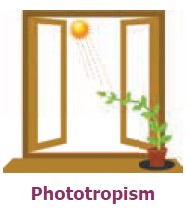
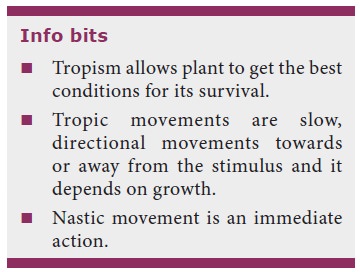
Tropism is generally termed “positive” if growth is
towards the signal and “negative”, if it is away from the signal. While the
shoot in a plant moves towards the light, the roots move away in the opposite
direction. us the shoots are said to have positive
phototropism, while the roots have negative
phototropism. Can you think of an example of a negative hydrotropism?
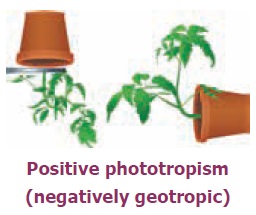
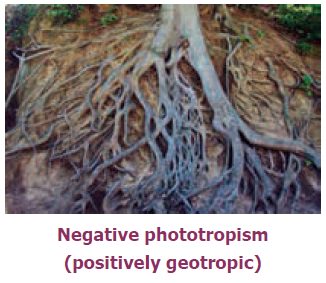
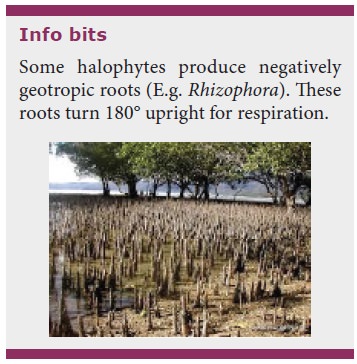
Water or gravity?
When a seed germinates the primary shoot, (plumule)
goes up while the primary root, (radicle) goes down. What stimulus is making
the primary root to go down? Is it gravity or water that is principally
responsible for the direction of the growth of a primary root? We can do an
interesting experiment to find out for ourselves.
What do
you need? Glass trough, sand, flower
pot, plugged at the bottom, pea or bean seeds and water.
How to do?
1. A glass
trough is taken and is filled with sand. A flower pot containing water, plugged
at the bottom is kept at the centre of the glass trough.
2. Soaked
pea or bean seeds are placed around the pot in the sand, what do we observe
after 6 or 7 days?
What do
you observe? It will be observed that radicle has grown towards the pot and moisture instead of
growing vertically downward.
What do
you conclude? It proves that
primary root is positively hydrotropic and that hydrotropism is stronger
than geotropism in this case.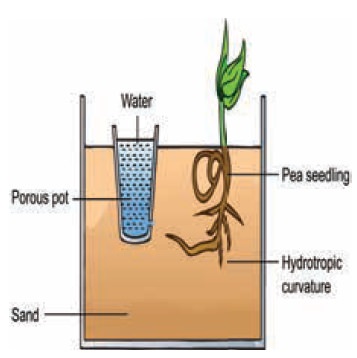
Related Topics